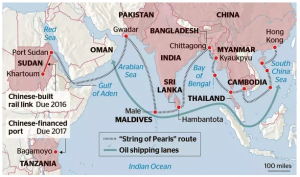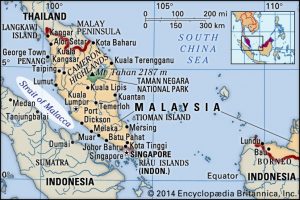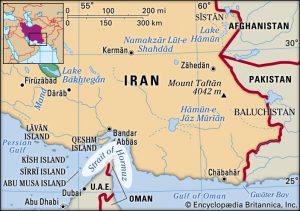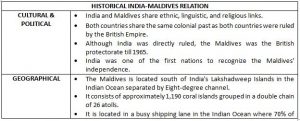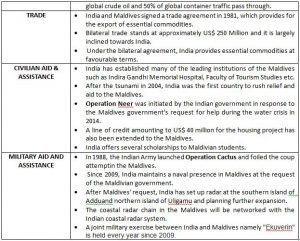DAILY CURRENT AFFAIRS (APRIL 16, 2022)
THE INDIAN ARCHITECTURE: HERITAGE SITES
1. BIHAR GOVT SEEKS FOR UNESCO’S HERITAGE TAG FOR 2,500-YR-OLD ‘CYCLOPEAN WALL’
THE CONTEXT: Bihar government has sent a fresh proposal to the Archaeological Survey of India (ASI) to get Cyclopean wall, a more than 2,500 years old structure at Rajgir, listed in the UNESCO World Heritage Site.
THE EXPLANATION: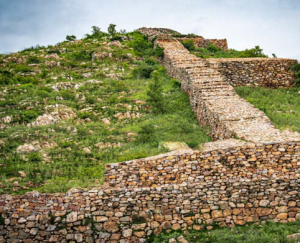
- The Cyclopean Wall of Rajgir is a 40 km long wall of stone which encircled the ancient city of Rajgir to protect it from external enemies and invaders, built before 3rd century BC.
- The 40-km long Cyclopean Wall of Rajgir is believed to have been built in the pre-Mauryan era, using massive undressed stones. It was erected by the rulers of the Brihadratha (rawani) Dynasty using massive undressed stones. The walls are also mentioned in Buddhist works.
- It is believed that the Cyclopean Wall at Rajgir is similar to “Frontiers of the Roman Empire” that runs through Germany, UK and Northern Ireland, which was included on UNESCO’s world heritage list in 1987.
- Bihar is the home to two UNESCO World Heritage Sites and quite a few sites on the tentative list. Nalanda University is one of the two UNESCO World Heritage Site in Bihar and was listed in 2002. It is listed as the Archaeological Site of Nalanda Mahavihara at Nalanda, Another ancient monument in the state that has been included in UNESCO World Heritage Site list, is Mahabodhi temple of Bodhygaya.
THE ENVIRONMENT, ECOLOGY AND CLIMATE CHANGE
2. MAJOR TAKEAWAYS FROM THE LATEST INTERGOVERNMENTAL PANEL ON CLIMATE CHANGE REPORT?
THE CONTEXT: In its latest assessment report, the Intergovernmental Panel on Climate Change (IPCC) has laid out several scenarios on the steps that ought to be taken to keep temperatures below 2°C. It warned that even temporarily exceeding the warming level of 1.5°C over the next two decades would mean additional severe impact, some irreversible.
THE EXPLANATION:
The latest report is the third instalment of the IPCC’s Sixth Assessment Report (AR6), which will be completed this year (2022).
What are the key messages?
- Total net anthropogenic GHG (greenhouse gas) emissions have continued to rise from 2010–2019, as have cumulative net CO2 emissions since 1850. Average annual GHG emissions during 2010-2019 were higher than in any previous decade, but the rate of growth between 2010 and 2019 was lower than that between 2000 and 2009. By 2019, the largest growth in absolute emissions occurred in carbon dioxide from fossil fuels and industry followed by
- The per-unit costs of several low-emission technologies have fallen continuously since 2010, however innovation has lagged in developing countries due to weak enabling conditions. Even if countries adhered to their promises towards reducing emissions, called Nationally Determined Contributions, warming will still exceed 1.5°C during the 21st century. Keeping warming below 2°C would then rely on a rapid acceleration of mitigation efforts after 2030.
- Tracked financial flows were still falling short of the levels needed to achieve mitigation goals across all sectors and regions. The challenge of closing gaps was largest in developing countries as a whole. Increasing financial flows can be supported by clear policy choices and signals from governments and the international community, it said. According to the scientists, limiting warming to around 1.5°C requires global greenhouse gas emissions to peak before 2025 at the latest and be reduced by 43% by 2030; at the same time, methane would also need to be reduced by about a third.
- Even if this happened, it is almost inevitable that this ceiling would be temporarily breached but, with appropriate action, it could again dip by the end of the century.
- The global temperature will stabilise when carbon dioxide emissions reach net zero. For 1.5°C, this meant achieving net zero carbon dioxide emissions globally in the early 2050s; for 2°C, it is in the early 2070s. Even limiting warming to around 2°C would still require global greenhouse gas emissions to peak before 2025 at the latest and be reduced by a quarter by 2030, the report stressed.
What are the implications of this report for India?
- The report’s warning against opening new coal plants is of relevance to India. The panel finds that all coal-fired power plants, without the technology to capture and store carbon (CCS), would need to be shuttered by 2050 if the world aspired to limit global temperature rise to 1.5°C.
- According to the Central Electricity Authority, India had about 211 GW of operational coal-fired power plants — roughly 10% of global capacity. As per Global Energy Monitor data, another 31 GW was being constructed and about 24 GW in various pre-construction phases.
- None of the existing under construction coal-fired power plants in India have CCS facilities. India has committed to a net-zero year, or when it would cease to be a CO2 emitter, of 2070 and has defined a pathway to transition to renewable energy sources but also insisted on its right to coal use given its developmental needs as well underlining that the historical responsibility of climate change from fossil fuel rested with the developed countries, who needed to shoulder much of the mitigating burden.
- The Centre has “welcomed” the report and said it recognises India’s position that developed countries must do more to mitigate climate change.
THE ECONOMIC DEVELOPMENTS
3. EGYPT TO IMPORT WHEAT FROM INDIA
THE CONTEXT: According to the Union Minister of Commerce and Industry said that Egypt has approved to import wheat from India.
THE EXPLANATION:
- Egypt, one of the world’s biggest importers of wheat which has been importing the grain from Russia and Ukraine, has agreed to source wheat from India.
- In the wake of trade disruptions caused due to the Ukraine conflict, Egypt is exploring other sources to import wheat to meet its demand.
Wheat exports to Egypt
- Officials from agriculture quarantine and pest risk analysis of Egypt examined the processing units, port facilities and farms in various states in India and agreed to import wheat from India.
- India is undertaking measures to ensure that the best quality of wheat will be exported to Egypt. India is looking to export about 1 million tonnes of wheat to Egypt.
- India aims to export about 10-11 million tonnes of wheat in FY23 due to the increase in global demand post the Russian invasion of Ukraine.
- Also, India is having trade talks with various other countries that look to import wheat from the country.
BACKGROUND:
India – Egypt Trade Relations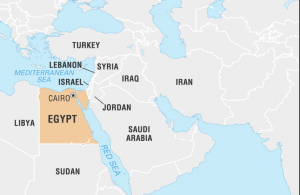
- Egypt has traditionally been one of India’s most important trading partners in Africa.
- The India-Egypt Bilateral Trade Agreement has been in operation since 1978.
- The bilateral trade was valued at $ 4.15 billion in 2020-21.
- Egypt’s exports to India were valued at $ 1.89 billion
- Imports from India at $ 2.26 billion
- India has a favourable trade balance of about US$ 372 million.
- Top imports from Egypt – Mineral Oil, Fertilizers, Inorganic Chemicals and Cotton
- Top exports to Egypt – Buffalo Meat, Light Vehicles and Heavy Machinery.
| Value Addition
Wheat production in India
|
4. EXPLAINED: WHAT ARE OIL BONDS, AND TO WHAT EXTENT DO THEY TIE THE GOVT’S HANDS?
THE CONTEXT: The Centre has argued that it cannot reduce taxes on petrol and diesel as it has to bear the burden of payments in lieu of oil bonds issued by the previous UPA government to subsidize fuel prices.
THE EXPLANATION:
What are Oil Bonds?
- Oil bonds are special securities issued by the government to oil marketing companies (OMC) in lieu of cash subsidy.
- These bonds are typical of a long-term tenure like 15-20 years and oil companies are paid interest.
- Before the complete deregulation of petrol and diesel prices, oil marketing companies were faced with a huge financial burden as the selling price of petrol and diesel in India was lower than the international market price.
- This ‘under-recovery is typically compensated through fuel subsidies allocated in the Union budget.
- However, between 2005 and 2010, the UPA government issued oil bonds to the companies amounting to Rs 1.4 lakh crore to compensate them for these losses.
Why do governments issue such bonds?
- Compensation to companies through the issuance of such bonds is typically used when the government is trying to delay the fiscal burden of such a payout to future years.
- Governments resort to such instruments when they are in danger of breaching the fiscal deficit target due to unforeseen circumstances that lead to a collapse in revenues or a surge in expenditure.
- These types of bonds are considered to be ‘below the line’ expenditure in the Union budget and do not have a bearing on that year’s fiscal deficit, but they do increase the government’s overall debt.
- However, interest payments and repayment of these bonds become a part of the fiscal deficit calculations in future years.
Backgrounder: Deregulation of fuel prices
- Fuel price decontrol has been a step-by-step exercise, with the government freeing up prices of aviation turbine fuel in 2002, petrol in 2010, and diesel in 2014.
- Prior to that, the government would intervene in fixing the price at which retailers were to sell diesel or petrol.
- This led to under-recoveries for oil marketing companies, which the government had to compensate for.
- The prices were deregulated to make them market-linked, unburden the government from subsidizing prices, and allow consumers to benefit from lower rates when global crude oil prices tumble.
- Price decontrol essentially offers fuel retailers such as Indian Oil, HPCL, or BPCL the freedom to fix prices based on calculations of their own cost and profits.
- However, the key beneficiary in this policy reform of price decontrol is the government.
Impact: Loss of consumers
- While oil price deregulation was meant to be linked to global crude prices, Indian consumers have not benefited from a fall in global prices.
- The central, as well as state governments, impose fresh taxes and levies to raise extra revenues.
- This forces the consumer to either pay what she’s already paying or even more.
THE GOVERNMENT SCHEMES/ INITIATIVES IN THE NEWS
5. e-DAR PORTAL TO HURRY UP ACCIDENT COMPENSATION CLAIMS
THE CONTEXT: The Ministry of Roads, Transport and Highways (MoRTH) has developed the portal named ‘e-DAR’ (e-Detailed Accident Report). Digitalized Detailed Accident Reports (DAR) will be uploaded on the portal for easy access.
THE EXPLANATION:
- It is a web portal that will help provide instant information on road accidents and accelerate accident compensation claims, bringing relief to victims’ families.
- Digitalized Detailed Accident Reports (DAR) will be uploaded on the e-DAR portal for easy access and the web portal will be linked to the Integrated Road Accident Database (iRAD).
- The portal will also be linked to other portals like “Vaahan” and will have access to information on driving license details and registration of vehicles.
- The e-DAR portal will be conducting multiple checks against fake claims by conducting a sweeping search of vehicles involved in the accident, the date of the accident, and the First Information Report number.
- The portal will help in geo-tagging the accident location along with the site map.
- Various information such as photos, videos of the accident spot, damaged vehicles, injured victims, eye-witnesses, etc., will be uploaded immediately on the portal.
THE PRELIMS PRACTICE QUESTIONS
QUESTION OF THE DAY
Q. Consider the following statements:
- India is the second-largest wheat producer in the world.
- Key export destinations are US, Japan, and Australia.
Which of the statements given above is/are incorrect?
a) 1 only
b) 2 only
c) Both 1 and 2
d) Neither 1 nor 2
ANSWER FOR 15TH APR 2022
Answer: A
Explanation:
- Statement 1 is correct: According to India Meteorological Department (IMD), a monsoon is considered “normal” when rainfall falls between 96% and 104% of the LPA.
- Statement 2 is incorrect: IMD has recently revised long period average (LPA) from earlier 88 cm to 87 cm.
